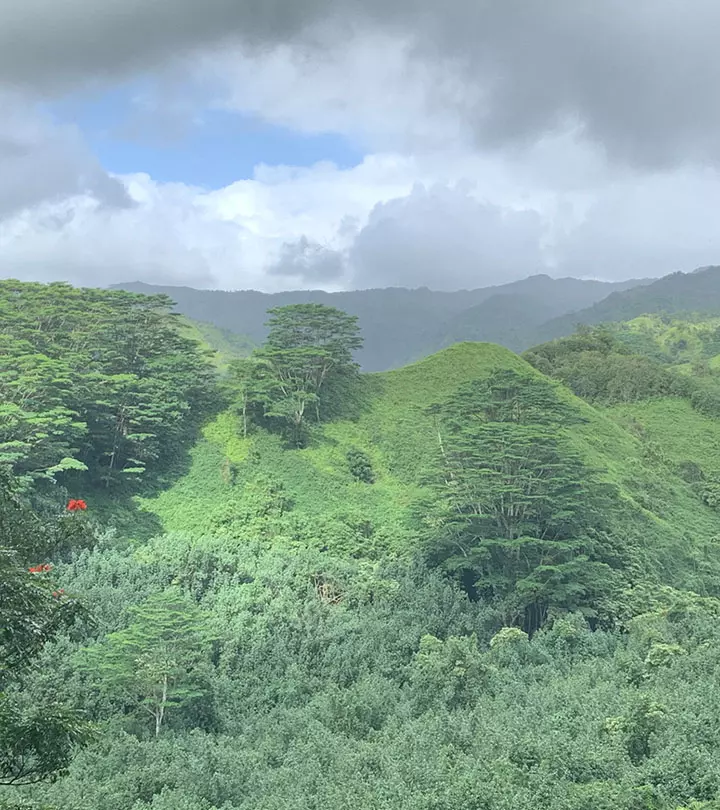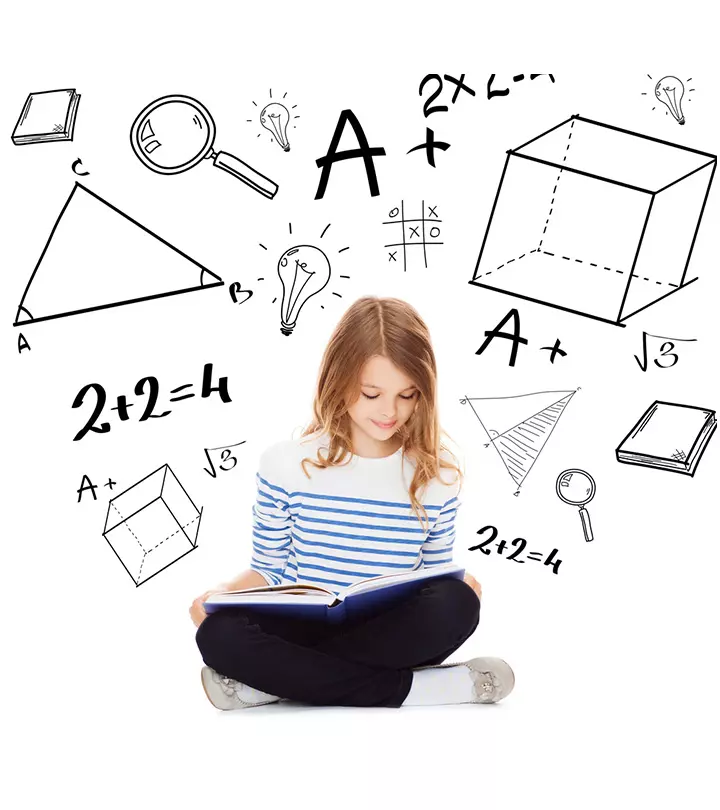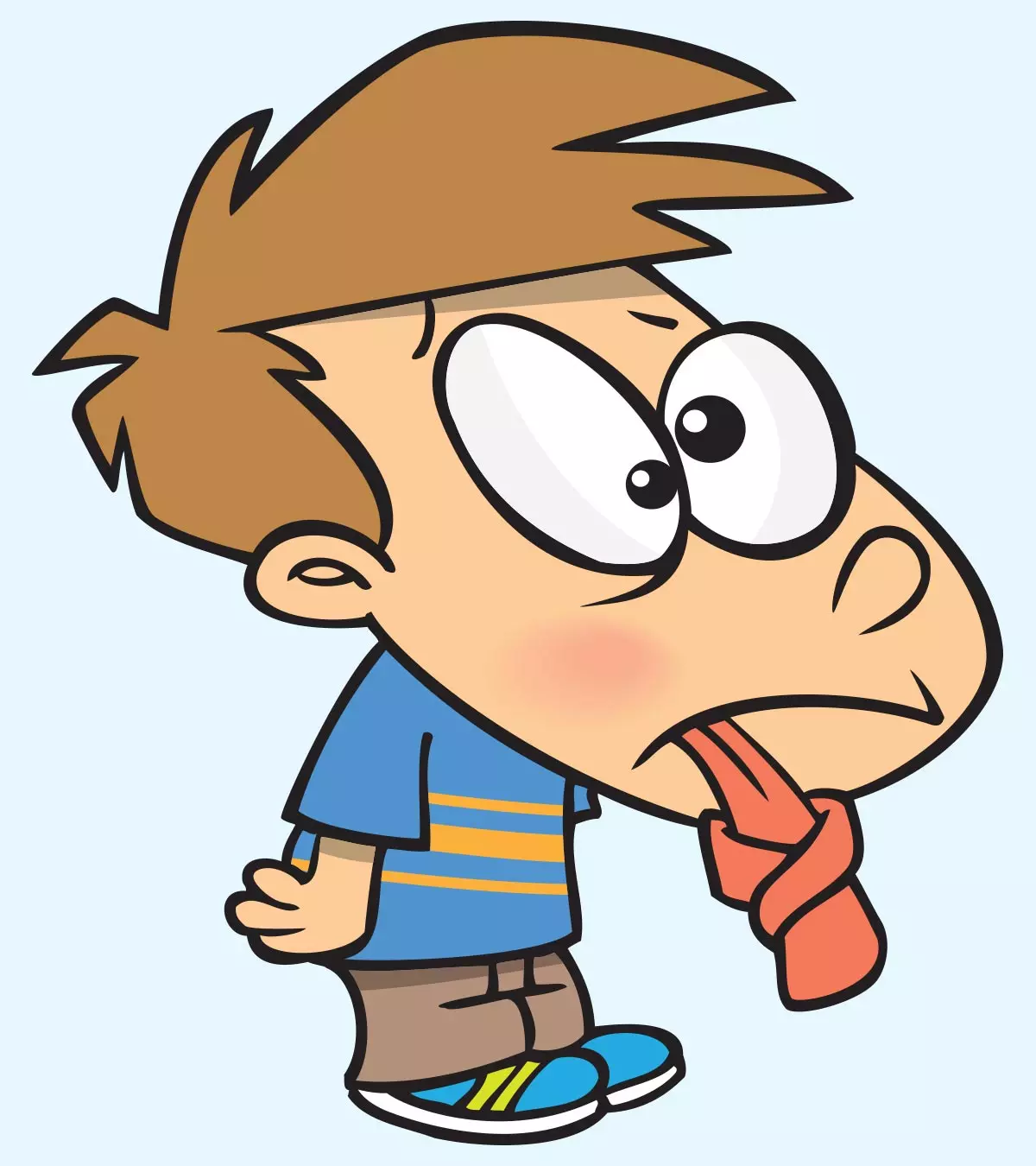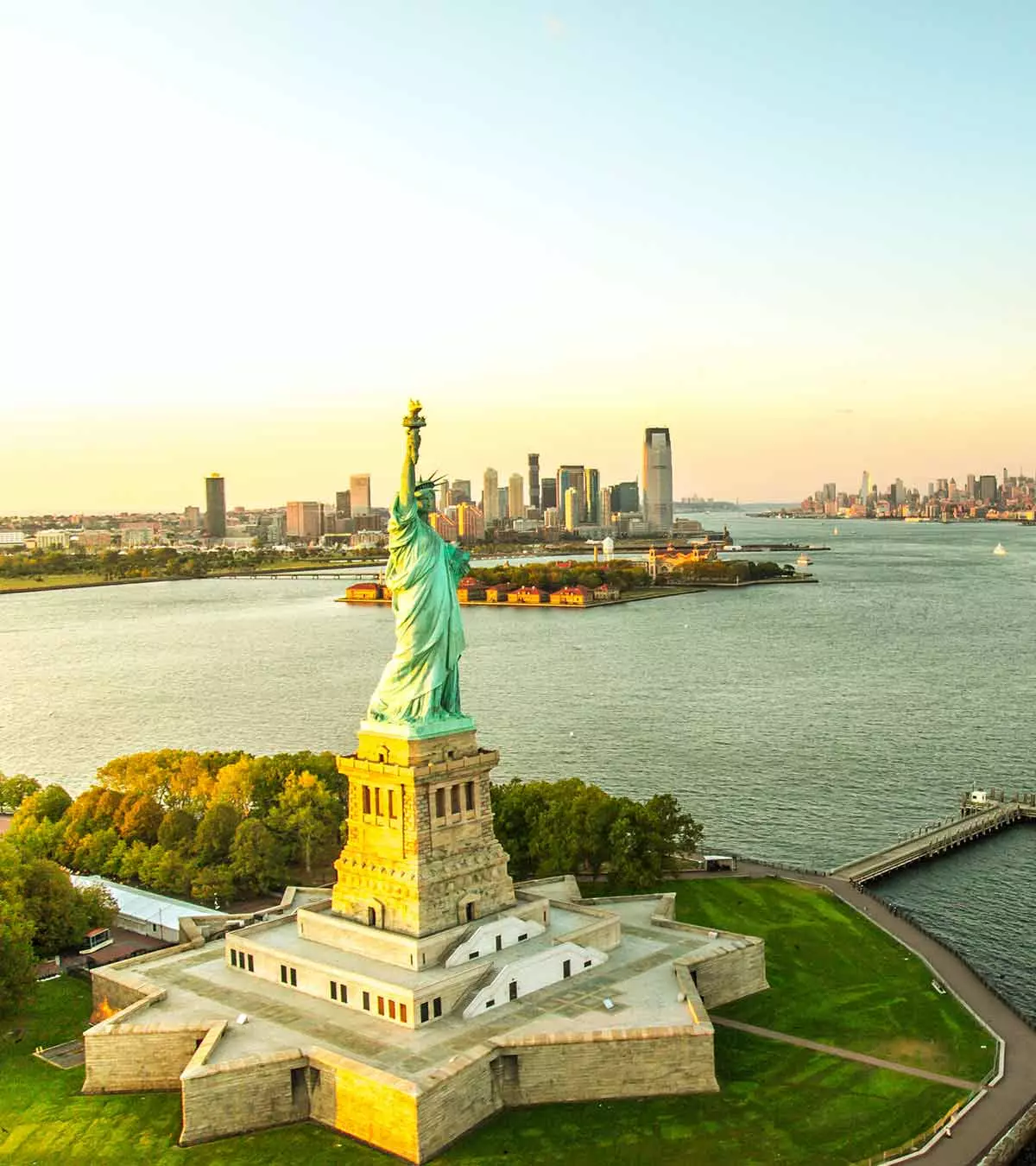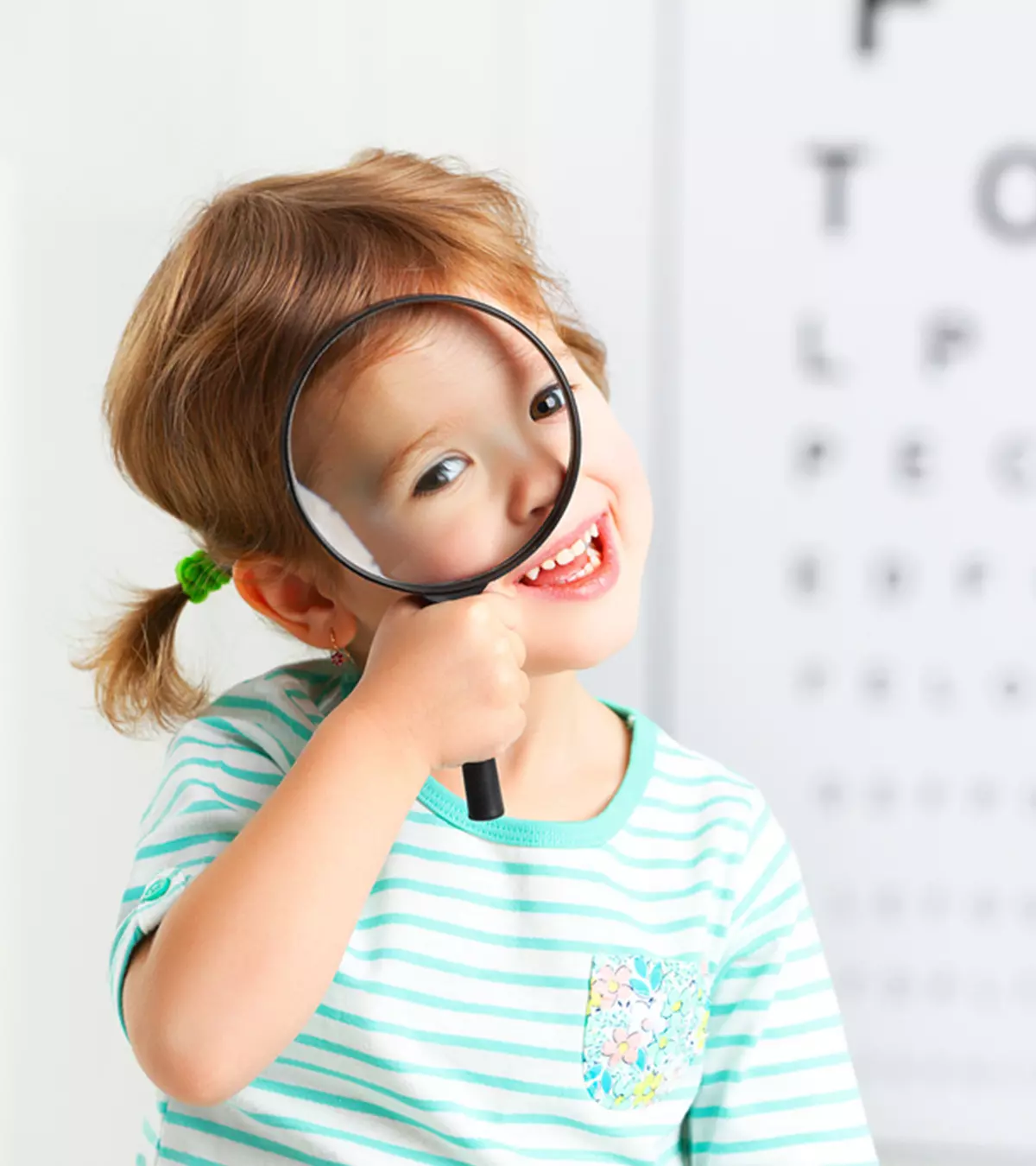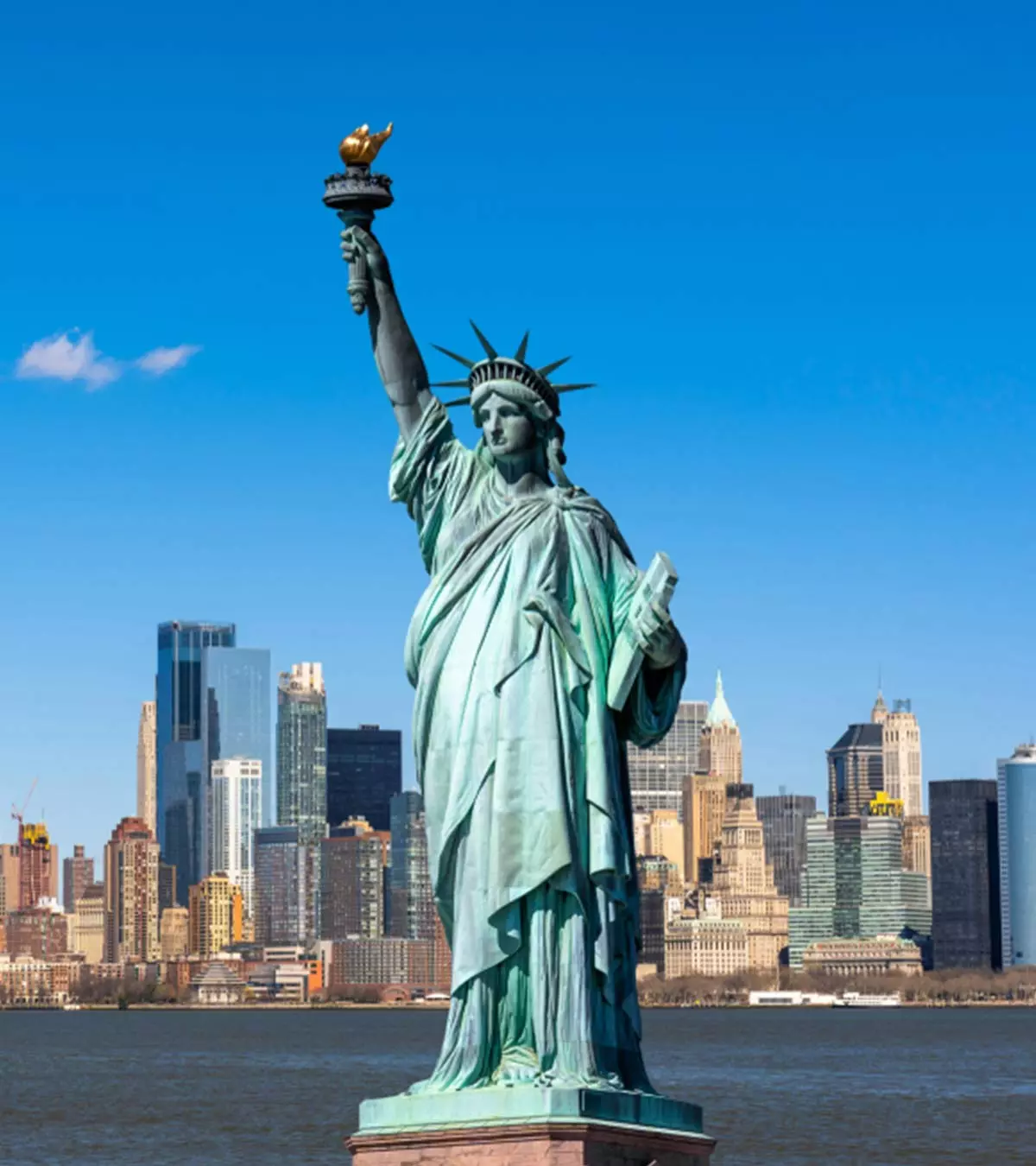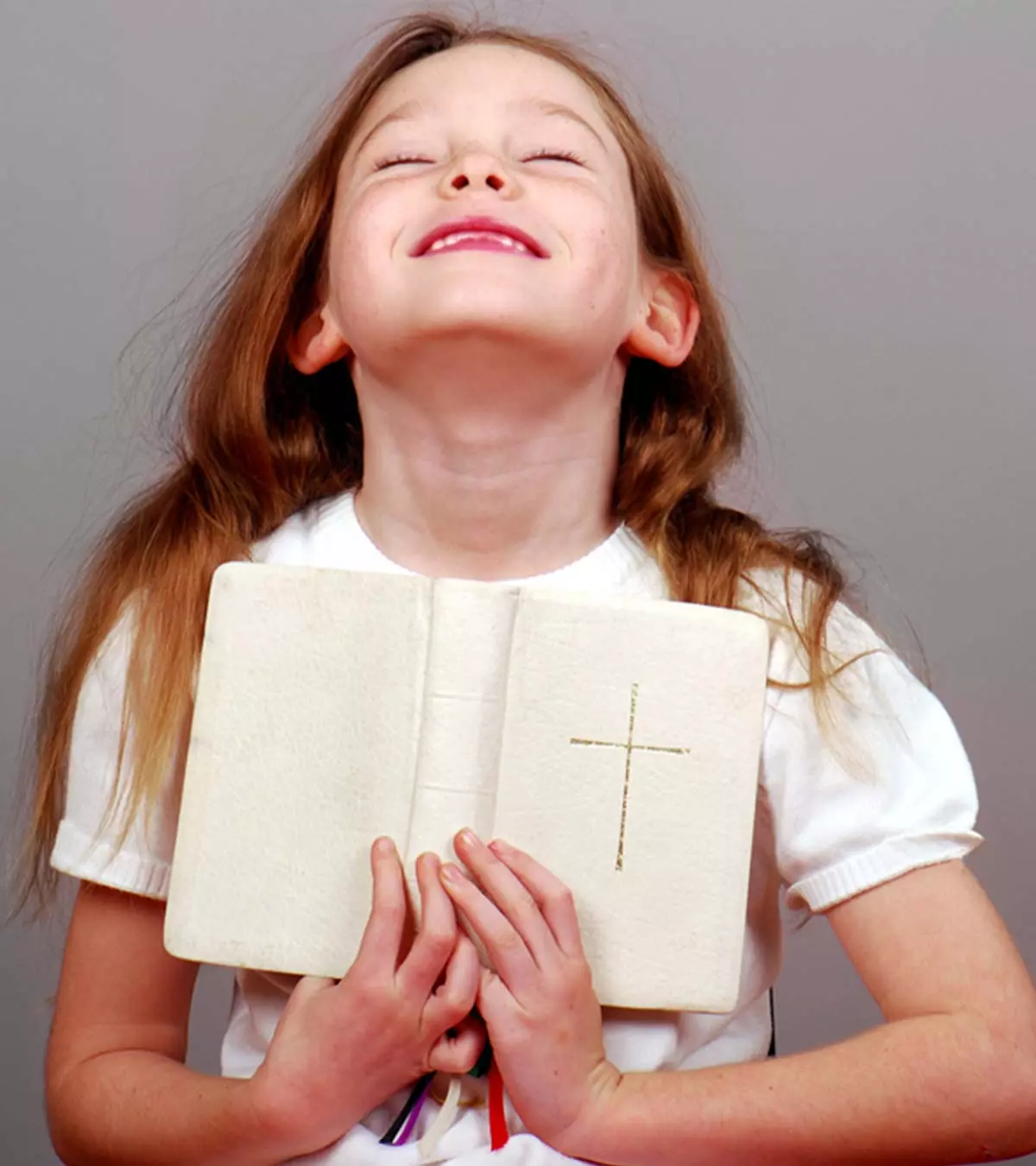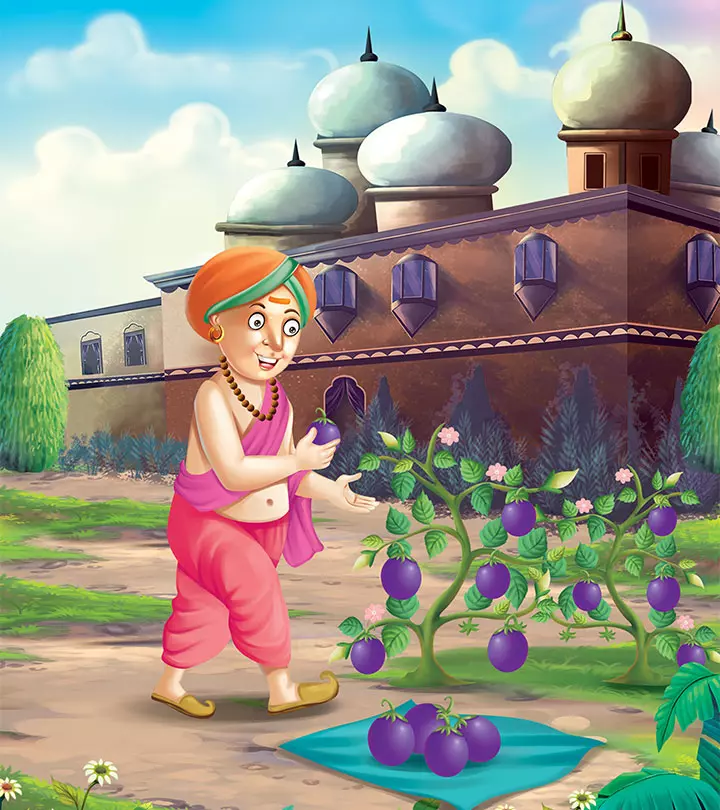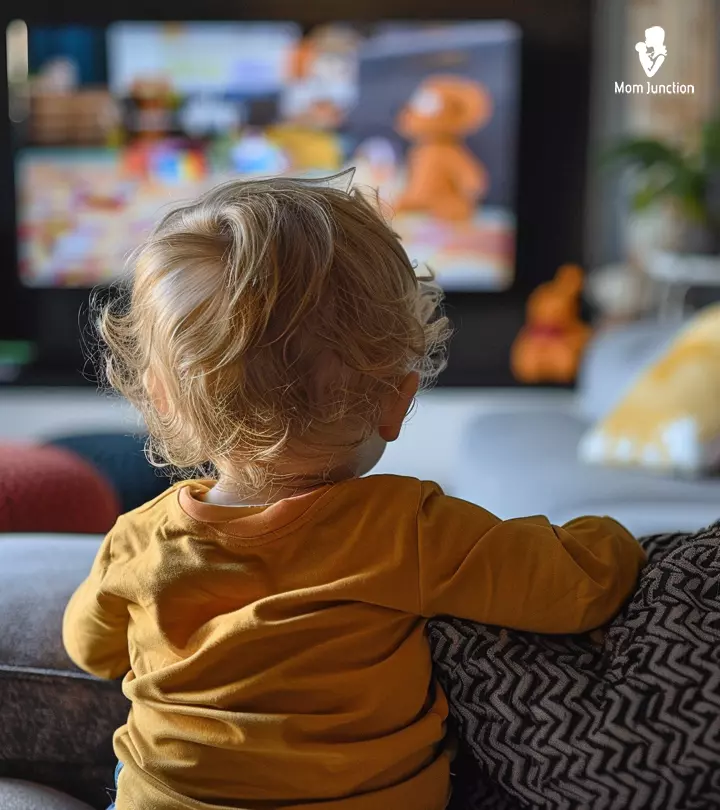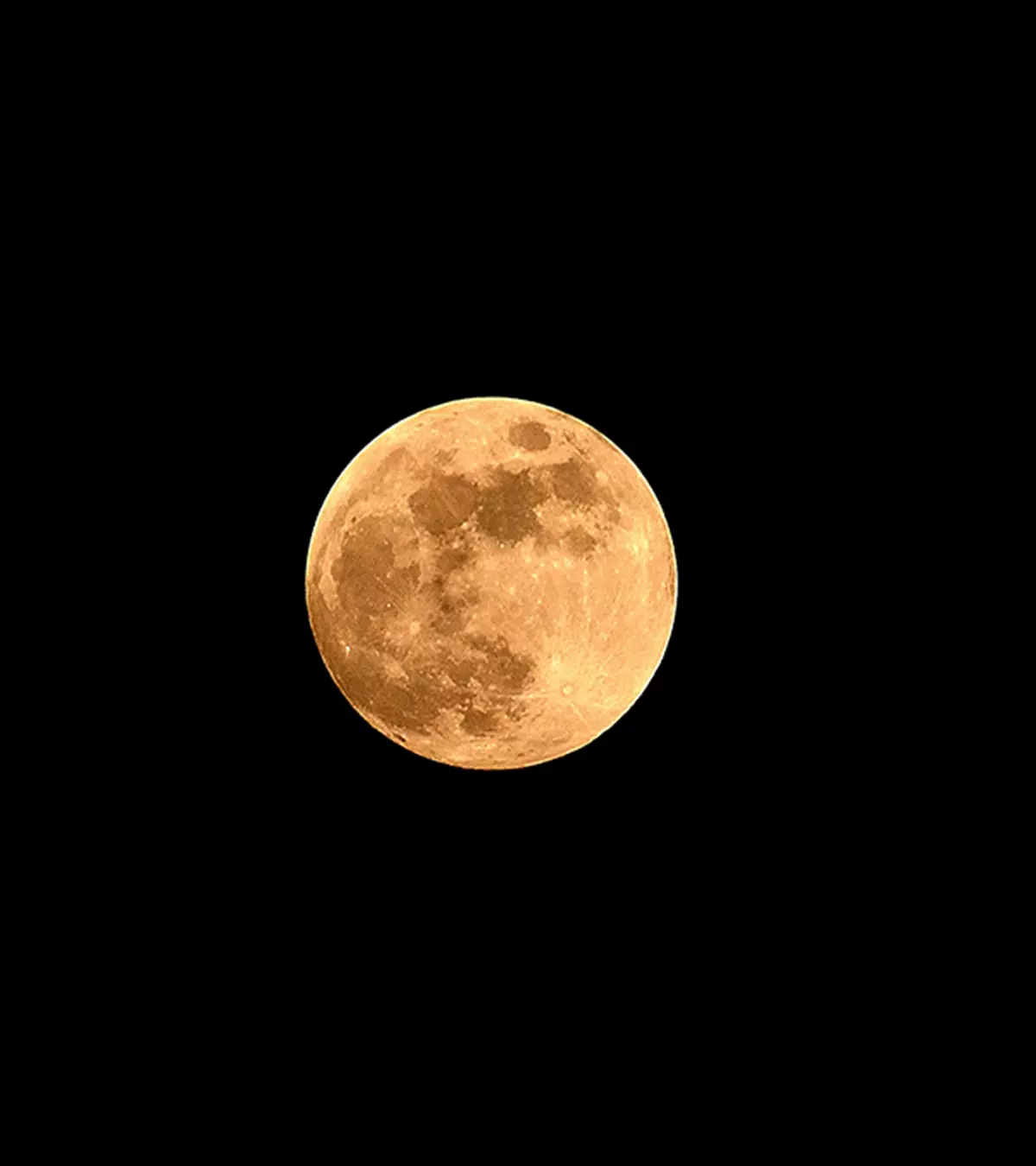
Image: Shutterstock
If your child has recently been gazing at the night sky a lot, pique their interest with some moon facts for kids. Everyone is fascinated by the sky, the stars, and the moon – a beautiful celestial body that waxes and wanes each month and rules the night sky in full glory.
To help you teach your kids about this beautiful orbed maiden, we have compiled a list of fun facts about the moon to enhance your child’s knowledge about its surface, measurements, and phases. Also, you can find a quiz below to test their existing know-how on the moon.
Key Pointers
- The Moon is the Earth’s only natural satellite and formed about 30 million years after the Earth.
- The Moon has no atmosphere, has a gravitational force, and temperatures ranging from 260℉ to -280℉, making it unsuitable for life.
- The seas of the Moon are filled with frozen lava and appear as dark spots, while the phases of the Moon are caused by Earth’s shadow.
- It takes the Moon 27.3 days to complete one rotation around the Earth, making one day on the Moon equivalent to 27 days on Earth.
Fun Moon Facts For Kids
Here are some fun moon facts for kids.
- Moon is the Earth’s only natural satellite. A natural satellite is any space body that orbits around a planet or an asteroid.
- Many other natural satellites orbiting other planets in the Solar System are also referred to as moons. But there’s only one for the Earth.
- Various people declared the Moon as their property, and have even sold parts of it under Lunar deedsiDocuments or certificates that claim to transfer the ownership of a plot(s) of land on the moon . But such deeds have no legal sanctityiA lawful contract that is to be recognized and upheld by the institutions and individuals of the society .
- The International Moon Treaty declares Moon as an international common property.
- Scientists are unsure about the formation of the Moon. The prevalent scientific theory says that a rock, named Theia, the size of the planet Mars, hit the Earth some 4.5 billion years ago. The debris (the scattered pieces of the rock) from the collision clustered together to form the Moon.
- The Moon was formed 30 million years after the Earth formed.
- The Moon is around 4.5 billion years old.
- After 500 million years of the formation of the moon, many heavenly bodies continued to collide with the Earth’s surface. But none of them managed to form a satellite to the Earth. This makes the Moon unique.
- The Moon is the 5th largest moon in the Solar System.
- The Moon doesn’t have the light of its own. The moonlight we see is the sunlight reflected on the moon’s surface.
 Did you know?
Did you know?- The Moon has no life on it because it has no atmosphere.
- The surface temperature of the Moon can range from as hot as 260oF to as cold as -280oF.
- The surface of the Moon contains a large number of craters (a bowl-shaped cavity on a celestial object), due to the collision of asteroids, cometsiThe frozen remains in the solar system, made of rock, ice, and dust that heat up and emit gas as they approach the sun on the surface of the Moon over time.
- The Moon has mountains on it. The tallest mountain is called Mons Huygens, which is 5.5km in height.
- As the Moon lacks an atmosphere and weather, the damages done to its surface, like craters or collisions, will remain forever.
- Like Earth, the Moon also has gravity (the force pulling things towards it). It is responsible for the high and low tides in the Earth’s seas and oceans every day.
- The Moon’s gravity is 1/6th of the Earth’s, so if you weigh 45kg (100lb) on Earth, you’d weigh 7.5kg on the Moon.
Moon Measurement Facts
The Moon appears tiny in the sky but it is not that tiny. Check these facts out:
- The mantle of the moon is made up of dense rocks rich in iron and magnesium. The mantle is approximately 1,330km thick.
- The mass of the moon is 7.35*1022kg, around 1/80th of Earth’s mass.
- The moon has a radius of 1,737.5km, which is less than one-third of the Earth’s.
 Trivia
TriviaGive your kid a binocular and let them observe the surface of the moon with all its scars, mountains and pits.
The Surface of The Moon Facts For Kids
Explain to them what it is that they see on the Moon’s surface. Here’s how you can do it.
- The Moon’s surface has damage marks, craters, lava plains, mountains, valleys, and pits caused by the rocks colliding with the satellite’s surface.
- The dark patches seen on the Moon’s surface during the Full Moon are referred to as the “seas of the moon” which are merely dark, frozen lava.
- The Moon has a core, mantle, and crust. The core is rich in iron, the mantle is made of minerals like olivine and pyroxene, and the crust is made of oxygen, silicon, magnesium, iron, calcium, and aluminum.
- The core of the moon has a thickness of 490km and the crust is 70km thick in the near-side hemisphere and 150km in the far-side hemisphere.
Moon Orbiting Facts
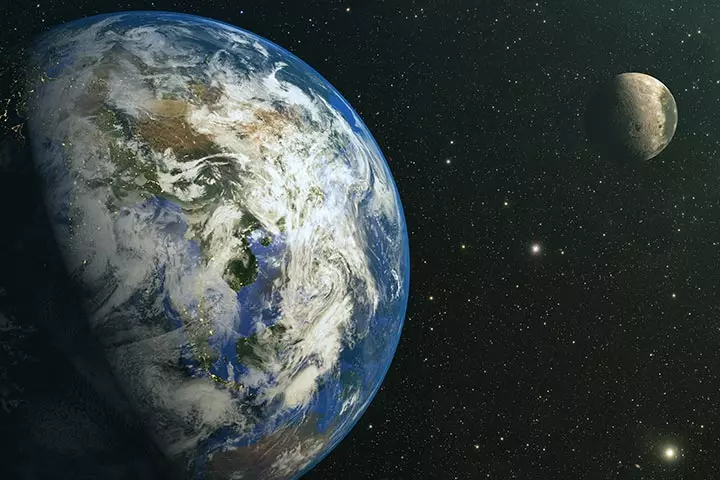
Image: Shutterstock
Here are some orbiting facts of the moon that will wow your child.
- Just like the Earth orbits the Sun, the Moon orbits the Earth.
- The path taken by the moon to orbit around the Earth is called an ellipse.
- The Moon rotates in the West-to-East direction while orbiting the Earth.
- The Moon takes 27.3 days for one full orbit rotation.
- One day on the Moon lasts for 27 earth days.
- The distance to the Moon from the Earth’s center is about 385,000km.
- The moon travels at a speed of 3,683km/hr around the earth.
 Fun fact
Fun fact- After 27 days, 7 hours, 43 minutes and 11.6 seconds, the moon completes one orbit.
- The moon is moving away from the Earth at 3.8cm a year due to tidal interactionsiForces arising from variations in an object's gravitational field strength while interacting with another object's gravitational field . It will continue for 50 billion years; meaning then the Moon will take 47 days to make a full orbit around the Earth.
- The Moon’s orbit around the Earth inspired the human calendar month.
Many countries and nations have ventured to step on the moon, as it has intrigued human imagination forever.
Moon landing facts for kids
Here are some fantastic lunar landing facts.
- Galileo was the first person to make the map of the moon. He also developed the telescope in 1609.
- The first man to step on the Moon was Neil Armstrong on July 21, 1969.
- The spacecraft Eagle carried the first man landing on the Moon’s surface.
- The first words of Armstrong after landing on the Moon, “That’s one small step for man, one giant leap for mankind,” have become famous.
- The lunar landing mission, Apollo 11 Mission, was conducted by NASA.
- It takes two days to travel from the Earth to the Moon in a spacecraft.
 Point to consider
Point to consider- In this video, you can watch the first landing of Neil Armstrong filmed by NASA.
- The footprints of Armstrong and his fellow astronauts Buzz Aldrin and Michael Collins will remain intact for 10 million years because of no erosioniRemoval of surface materials (e.g., soil, rock, and sediments) from the surface by natural forces such as wind or water and the charcoal-gray surface of the moon.

Image: IStock
- The first successful unmanned spacecraft to land on the moon was the Luna program conducted by the Soviet Union in 1996.
- Most scientists agree that the Moon features small amounts of water. However, recently, scientists from India’s Chandrayaan-1 spacecraft mission have claimed that they have amassed definitive evidence of water-ice on the Moon’s surface; they are also ancient in origin.
Lunar Eclipse Facts
There are times when we don’t get to see the moon. It gets hidden while orbiting. How and why? Let’s explore what an eclipse is and some lunar eclipse facts.
- When the Earth revolves around the Sun, there are instances when it comes between the Sun and the Moon. This is called a lunar eclipse.
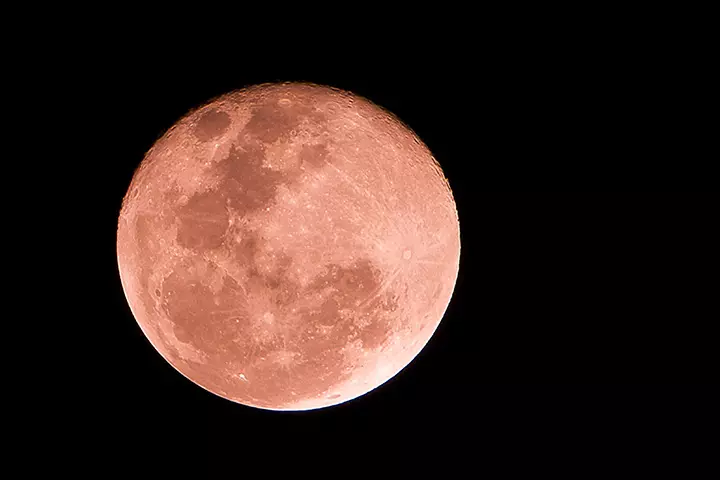
Image: IStock
- A total lunar eclipse happens when the Earth’s shadow engulfs the entire Moon.
- According to NASA, the longest lunar eclipse took place on July 27, 2018, lasting for 1 hour and 43 minutes.
- The Moon appeared deep red while it was under the full shadow of the Earth; hence this eclipse was called the ‘blood moon eclipse’.
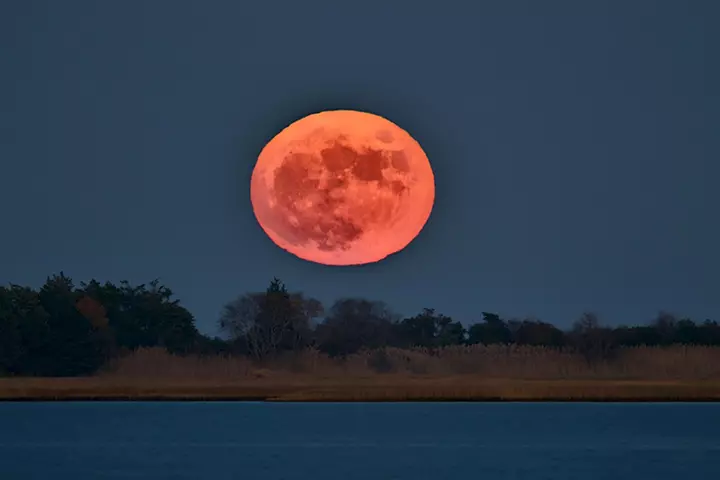
Image: IStock
- During the total lunar eclipse phase, the light from the Sun gets scattered throughout the Earth’s atmosphere and manages to reach the Moon’s surface.
- During the totality period, the blue light is scattered but the longer wavelength red light from the Sun does not. This light reaches the Moon’s surface making it appear red.
 Trivia
TriviaPhases of the Moon facts for kids
We don’t see all sides of the Moon, nor do we see the Moon in its same shape over a month. The changing shapes of the Moon are called its phases.
- The Moon has many different phases. They are:
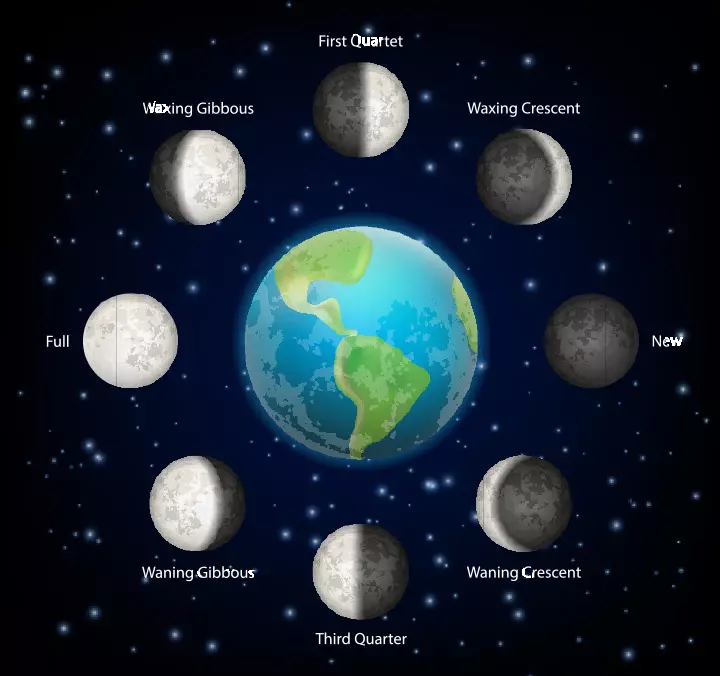
Image: Shutterstock
- New Moon
- Crescent
- First Quarter
- Waxing Gibbous
- Full Moon
- Waning gibbous
- New Moon
- Last Quarter
- As the Moon is seen through the Sun’s reflection when the Moon orbits the Earth, the Sun lights up different parts of it.
- This changing of light gives the impression of the changing shapes of the Moon; while it is actually our view that is altering.
- The Moon orbits in such a way that we see the same side always.
- We can see only 50% of the total surface area of the moon.
- The first glimpse of the other side of the moon, often called the dark side, was not seen until a space probe (like a satellite) photographed it in 1959.
- When the moon looks like it is getting bigger, it is called waxing; when it seems like getting smaller, it is called waning.
- When the face of the Moon is facing the Sun fully, it’s a Full Moon, when we see the entire Moon.
- But when the Moon moves around the Earth, the side we get to see gradually gets hidden from the Sun; that’s when we can hardly see it and this is called the New Moon.
- The side that faces us is known as the ‘near side’, and the other part is known as the ‘far side’.
- The far side of the moon has fewer Maria, the pools of solidified lava, than the near side.
Now that your little one has learned a lot about the Moon, it’s time to test their knowledge in a fun way.
Interesting Moon Quiz
Try these questions and see how much your kiddie remembers. If they don’t, brushing up through a fun quiz is the best way. Let’s start.
1. Which of the following people was the first to set foot on the moon?
a. Jim Lovell
b. Neil Armstrong
c. Orville Wright
d. Luke Skywalker
Answer: b
2. How long does a day on the moon last?
a. 27 earth days
b. 24 hours, like earth
c. 12 hours
d. 5 earth days
Answer: a
3. How long does it take the moon to make a complete rotation?
a. 12 months
b. 3 months
c. 12 hours
d. 27 days
Answer: d
4. What phenomenon on Earth is influenced by the moon?
a. The growth of trees
b. The seasons
c. High and low tides
d. Rainfall
Answer: c
5. What, according to most astronomers, formed the Moon?
a. The Sun
b. A comet
c. An asteroid
d. The Big Bang Theory
Answer: c
6. What is the atmosphere of the Moon made of?
a. Helium
b. Oxygen
c. Nitrogen
d. Nothing
Answer: d
7. What is the age of the moon?
a. 100 years
b. 5.4 million years
c. 10 billion years
d. 4.5 billion years
Answer: d
8. What is the cause of the moon to shine?
a. The moon’s red surface
b. Sun’s light
c. Pixie dust
d. Other stars
Answer: b
9. Do you know which planet has the largest moon?
a. Earth
b. Saturn
c. Jupiter
d. Mars
Answer: Jupiter. (Ganymede is one of Jupiter’s moons and the largest in the Solar System).
10. How does erosion occur on the Moon?
a. Wind
b. Gases
c. Earthquakes
d. It doesn’t change
Answer: d
Frequently Asked Questions
1. Can you live on the moon?
No evidence has been found indicating that humans can live on the moon. However, researchers are looking for signs that indicate that life on the moon can be made possible.
2. Why is the moon called “the Moon?”
The Moon is called “the Moon” because, until 1610, it was believed that only one moon existed. In 1610, after Italian astronomy legend Galileo Galilei discovered four moons orbiting Jupiter, people came to know that other moons also existed (8). In Latin, Italian, and Spanish, the moon is called Lunar, whereas it is called Lune in French.
3. In what ways can knowledge of moon facts inspire a child’s curiosity about the universe?
Interesting facts and knowledge about the moon can inspire a child’s curiosity about the universe in many ways. Fascinating facts about space for kids will generate amazement and wonder in your children, instilling an interest in space science and research as they comprehend the vastness of the universe and the galaxies. As they learn about the effects of the moon on our planet, they will naturally be more curious about various phenomena around us.
4. How does learning about the moon’s influence on Earth’s climate benefit children’s environmental awareness?
Learning about the moon’s influence on the Earth’s climate can benefit children’s environmental awareness by giving them an idea of why certain natural phenomena occur. They can learn about the intricate relationship between the effects of the moon and Earth’s biodiversity, such as animal migration, reproduction, and behavior. Children can also learn that most natural phenomena result from the interactions between ocean temperatures, winds, and the gravitational pull of the moon, such as tides, ocean currents, and climate patterns like El Niño and La Niña.
5. Why is it important for children to understand the moon’s role in cultural and mythological beliefs?
Children need to understand the moon’s role in cultural and mythological beliefs to gain an appreciation for diverse cultural traditions and belief systems. They can explore the historical perspective of how and why the ancient civilizations revered and worshiped the moon. This historical and cultural relationship between humans and nature can also act as artistic inspiration and sharpen a child’s critical thinking skills when exposed to new and diverse ideas.
6. Why does the moon glow?
The Moon does not glow on its own; instead, it reflects sunlight. Its appearance changes as it orbits Earth and reveals different features when sunlight reflects off its surface (9).
7. What is a blue moon?
A blue moon is a term used to describe the second full moon within a calendar month. It’s relatively rare, occurring approximately once every 2 to 3 years due to the misalignment of lunar and calendar months. The phrase “once in a blue moon” is often used colloquially to refer to something that happens infrequently or rarely. The moon does not actually appear blue during a blue moon, as the term is a calendrical and not a color description (10).
As your child grows out of the fairy tales about the Sun, Moon, and stars, they become curious about what they actually are. The Moon is the Earth’s only natural satellite, formed about 4.5 billion years ago. There’s no actual moonlight. As the Moon orbits the Earth, the sunlight reflected by it is observed from the Earth. It has mountains, crates, and gravity but no atmosphere to sustain life. The post enlists several such interesting Moon facts for kids to help them learn more about this celestial body.
Infographic: What If The Moon Disappeared?
The bright shining ball in the night sky is more than just a light source. If the Moon ever disappeared from the Earth’s orbit, you would be surprised to know the after-effects. So, dive into this infographic and look at what a moonless Earth would look like. Illustration: Momjunction Design Team
Illustration: Fun And Interesting Moon Facts For Kids To Know

Image: Stable Diffusion/MomJunction Design Team
Learn all about the moon and its amazing features! Discover 10 fascinating facts about the moon for kids. Explore the moon’s role in our solar system and its impact on Earth.
References
1. About the Moon; NASA Science, Earth’s Moon.
2. Apollo to the Moon; Smithsonian National Air and Space Mission.
3. The Moon is moving away from Earth; Meteored
4. Shuai Li, Paul G. Lucey, Ralph E. Milliken; Direct evidence of surface exposed water ice in the lunar polar regions; PNAS.
5. The Moon; BBC Bitesize.
6. Moons; BBC.
7. Moon: Surface temperature; Science on a Sphere, National Oceanic and Atmospheric Administration.
8. Earth’s Moon Our Natural Satellite; NASA Science, Earth’s Moon.
9. The Moon; Cool Cosmos.
10. Everyday Mysteries; Library of Congress
Community Experiences
Join the conversation and become a part of our nurturing community! Share your stories, experiences, and insights to connect with fellow parents.
Read full bio of Elisa Yi
Read full bio of Sagari Gongala
Read full bio of Harshita Makvana
Read full bio of Praggya Joshi










